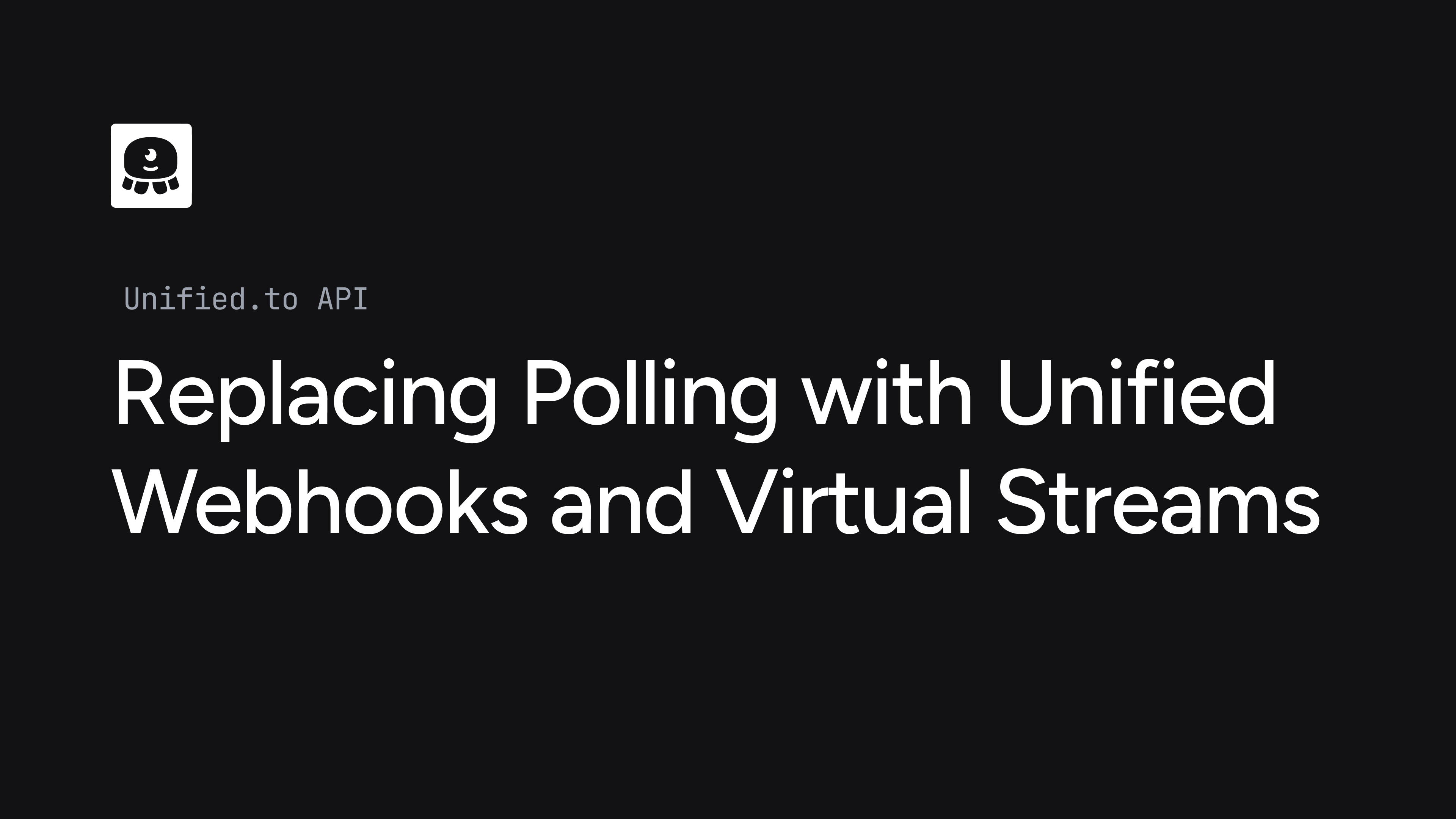Replacing Polling with Unified Webhooks and Virtual Streams
June 8, 2025

Modern SaaS platforms can't afford stale data. Teams expect real-time sync between systems, whether it's reflecting a closed deal, a new hire, or an updated support ticket. Yet many still rely on polling—a process that introduces lag, burns API calls, and creates engineering overhead.
Unified.to offers a better alternative: a hybrid model that uses native webhooks when available, and virtual webhooks (scheduled polled) when not. This lets developers replace scheduled polling jobs with real-time updates across 300+ SaaS integrations.
Why Polling Breaks at Scale
Polling involves repeatedly hitting a third-party API to check for updates. Even a basic sync job ("poll every 5 minutes") has drawbacks:
- Delayed data: You only see changes on the next interval. Data is always slightly stale.
- Inefficient: Most polls return no new data. You're wasting requests, especially at scale.
- Rate-limited: Many APIs impose strict quotas. Polling increases the risk of hitting these limits.
- Hard to maintain: You need custom schedulers, backoff logic, deduplication, and error handling.
In short, polling introduces both lag and maintenance cost.
Native Webhooks: Great (When They Exist)
Webhooks are an ideal solution: the source system pushes events to your app in real time. Stripe, Shopify, and GitHub are good examples of platforms that support this model.
But most SaaS APIs still don't offer webhook support. According to internal research, only about 11% of APIs have native webhook coverage. This forces teams to mix polling and webhook logic, increasing complexity.
Even when webhooks are supported, they come with requirements:
- Endpoint management
- Signature verification
- Event deduplication and ordering
Virtual Webhooks: Real-Time from Any System
Virtual webhooks (or "virtual streams") simulate webhook behavior by polling in the background, then emitting updates as if they were event-driven. Unified.to handles the polling logic for you, schedules checks like a native provider, detects changes, and delivers a webhook payload to your app.
From your perspective, it behaves like a normal webhook. Behind the scenes, Unified.to handles:
- Polling frequency
- Polling execution
- Change detection
- Payload normalization
- Retry logic on delivery failures
You get near real-time updates without having to write any polling code yourself.
Delivery Model Comparison
| Feature | Polling | Native Webhooks | Virtual Webhooks (Unified.to) |
|---|---|---|---|
| Data freshness | Delayed | Real-time | Near real-time |
| API support coverage | All APIs | Limited (∼11%) | All APIs |
| Setup complexity | High | Medium | Low |
| Rate limit exposure | High | Low | Low |
| Maintenance burden | High | Medium | Low |
Developer Experience
Polling requires infrastructure: background jobs, deduplication, observability, and rate-limit handling. Native webhooks reduce some of this, but often require per-integration setup.
Unified.to simplifies this:
- One webhook interface across all integrations
- Unified schemas across platforms
- Real-time logs and retry handling built in
Instead of writing and maintaining polling scripts for every integration, you subscribe to Unified.to events and move on.
When to Use Virtual Webhooks
- Integrating with older APIs that lack webhook support
- Syncing data from HR, ATS, or Accounting platforms
- Building features that depend on fresh data (e.g. AI assistants, real-time alerts, analytics dashboards)
Real-Time by Default
Unified.to's philosophy is real-time by default. Whether the underlying system supports webhooks or not, you get a webhook-like experience with fresh data and low-latency delivery.
You can also configure:
- Per-connection polling intervals
- Field-level filters
- Event-specific subscriptions
This gives teams fine-grained control without any of the plumbing.
Start Streaming, Not Polling
If your team is still maintaining polling logic or dealing with stale data, Unified.to offers a better path. Eliminate cron jobs, reduce integration overhead, and deliver real-time features faster.
Get started with Unified.to to see how hybrid webhook delivery—native + virtual—can simplify your architecture and accelerate your roadmap.
